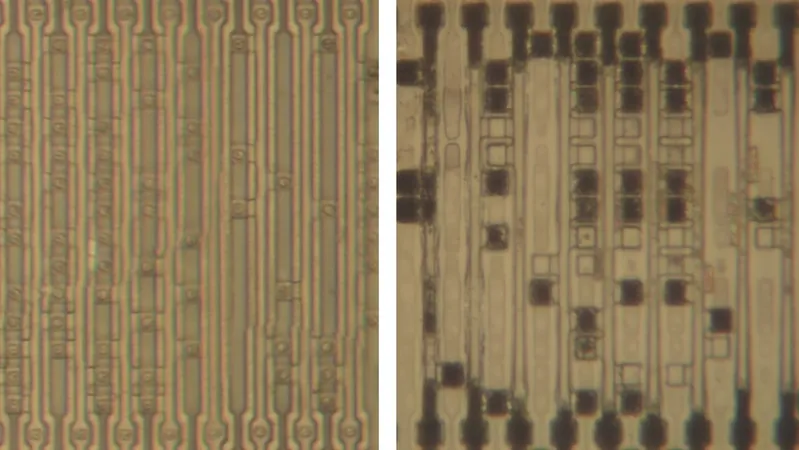
Unraveling the Infamous Pentium FDIV Bug: A Deep Dive into Computing History
2024-12-29
Author: Liam
The Birth of the Pentium Microprocessor
The early 1990s marked a transformative era in personal computing, as PCs began to capture the public's imagination like never before. Companies such as Intel and AMD were at the forefront of this technological revolution, engaging in fierce competition that included memorable advertising campaigns like 'Intel Inside,' which became synonymous with innovation.
The Emergence of the FDIV Bug
In 1993, Intel made headlines with the launch of its groundbreaking Pentium microprocessor. This event was initially celebrated as a major advancement, but it soon turned into a scandal when an obscure yet critical bug in the chip's floating-point division module came to light. Dr. Thomas R. Nicely, a mathematician on a quest to identify prime numbers, stumbled upon this significant flaw, thus igniting a firestorm of controversy for the tech giant.
Understanding the FDIV Bug
The 'FDIV bug,' named after the floating-point division instruction that it affected, turned out to be a significant issue for Intel, not just in terms of technical malfunction but also in its implications for customer trust and corporate reputation. The bug arose from a design flaw involving a lookup table stored within a programmable logic array (PLA) on the chip—a critical component intended to facilitate floating-point arithmetic.
The Technical Flaw Uncovered
The error stemmed from five missing entries in this lookup table. Ingenious analysis revealed that these defects were not merely due to transcription mistakes, as Intel initially claimed. Instead, the pattern of the missing entries suggested a deeper mathematical oversight in the algorithm used to generate the table, raising questions about the testing and validation processes employed during the chip's development.
Crisis Management and Fallout
Intel's handling of the FDIV bug became a classic case study in crisis management—or the lack thereof. As this was unprecedented on such a wide scale, the company faced a steep learning curve. Affected customers ranged from everyday users to high-profile organizations, many of whom relied on the Pentium for mission-critical applications. The fallout included financial repercussions, significant damage to the brand's reputation, and a concerted effort by Intel to rectify the situation, including offering refunds and replacements to customers.
Lessons Learned from the Pentium Saga
In retrospect, the Pentium FDIV bug stands as a cautionary tale for technology companies everywhere. It highlights the importance of rigorous testing, the potential vulnerabilities of complex systems, and the necessity of transparency with consumers, especially when it comes to technical malfunctions.
The Importance of Quality Assurance
For those looking to grasp the intricacies of floating-point mathematics and its real-world applications in silicon, a detailed examination of the FDIV bug remains a must-read. This incident not only shaped the future of Intel but also set a standard for quality assurance and crisis management in the tech industry. As we continue to innovate and push the boundaries of computing technology, the lessons learned from the Pentium saga should guide us in ensuring that history does not repeat itself.









 Brasil (PT)
Brasil (PT)
 Canada (EN)
Canada (EN)
 Chile (ES)
Chile (ES)
 Česko (CS)
Česko (CS)
 대한민국 (KO)
대한민국 (KO)
 España (ES)
España (ES)
 France (FR)
France (FR)
 Hong Kong (EN)
Hong Kong (EN)
 Italia (IT)
Italia (IT)
 日本 (JA)
日本 (JA)
 Magyarország (HU)
Magyarország (HU)
 Norge (NO)
Norge (NO)
 Polska (PL)
Polska (PL)
 Schweiz (DE)
Schweiz (DE)
 Singapore (EN)
Singapore (EN)
 Sverige (SV)
Sverige (SV)
 Suomi (FI)
Suomi (FI)
 Türkiye (TR)
Türkiye (TR)
 الإمارات العربية المتحدة (AR)
الإمارات العربية المتحدة (AR)